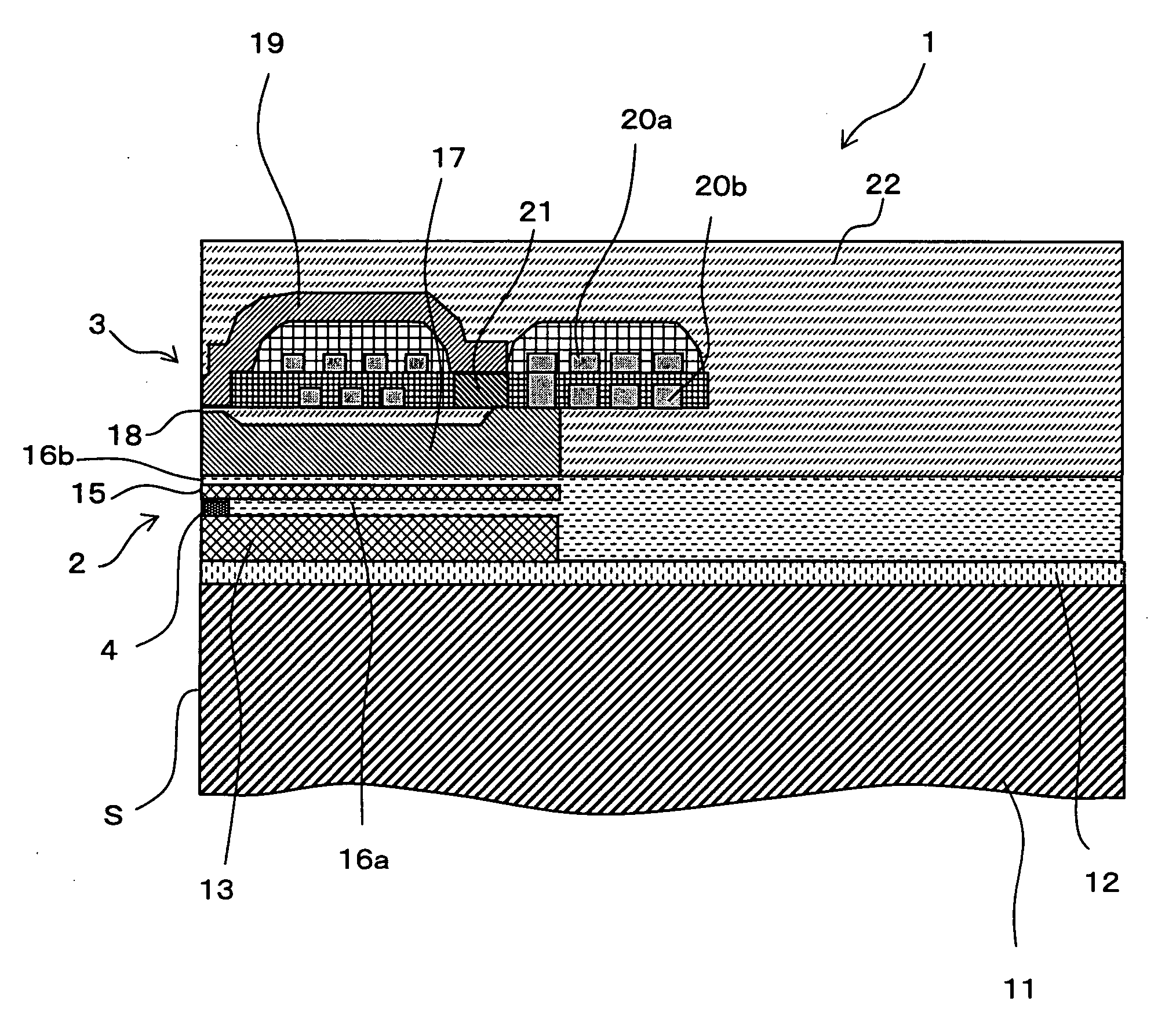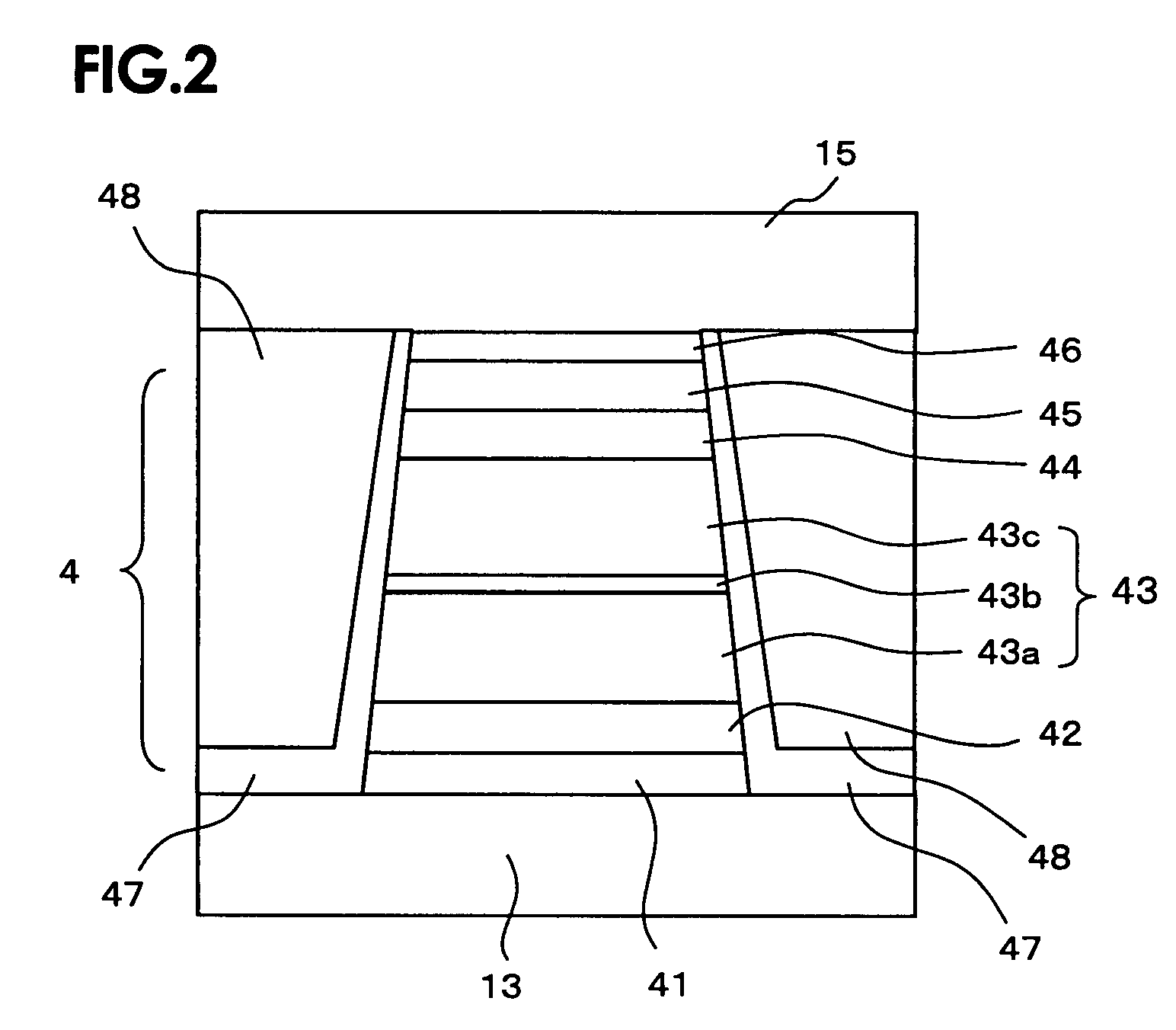Magnetic thin film and magnetoresistance effect element having a heusler alloy layer containing an additive element
a technology of additive elements and thin films, applied in the field of magnetic thin films, can solve the problems of uneven layer surface, uneven unevenness, and high temperature treatment of regularizing the heusler alloy layer, and achieve the effect of reducing the number of uneven layers
- Summary
- Abstract
- Description
- Claims
- Application Information
AI Technical Summary
Benefits of technology
Problems solved by technology
Method used
Image
Examples
experiment 1
(Experiment 1)
[0067]In Experiment 1, an alloy layer that contains CoMnSi as a base material and Ag as an additive element was formed on a substrate, and the alloy layer was regularized through annealing in order to produce a magnetic thin film having the L21 or B2 structure. Magnetic thin films were produced and the degree of regularization was measured for various amounts of the additive Ag that was added to the base material and for various annealing temperatures. The film thickness of the magnetic thin film was 80 nm. The degree of regularization after annealing was evaluated based on the saturation magnetization Ms (A / m) of the magnetic thin film and the diffraction intensity of X-rays on (110) plane or on (220) plane after regularization.
[0068]A CoMnSi alloy is completely regularized through annealing at 400° C., and has the saturation magnetization Ms of approximately 850(×103 A / m) after annealing at 400° C. The degree of regularization of the magnetic thin film can be evaluat...
experiment 2
(Experiment 2)
[0073]In Experiment 2, the relationship between the saturation magnetization Ms and the film thickness was measured for magnetic thin films that have the same composition as the magnetic thin film in Experiment 1. The magnetic thin films were annealed at different temperatures, and the amount of the additive Ag was 10 atomic % or 15 atomic %.
[0074]Table 4 shows the results when the amount of the additive Ag was 10 atomic %. FIG. 7 shows a graph showing the relationship between the film thickness and the saturation magnetization Ms when the amount of the additive Ag was 10 atomic %.
TABLE 4(Amount of additive Ag: 15 atomic %)Saturation magnetization (×103 A / m)AnnealingAnnealingAnnealingFilm thicknesstemperature:temperature:temperature:(nm)300° C.320° C.350° C.878082181910755825816207508118205074279182180722786825
[0075]Table 5 shows the results when the amount of the additive Ag was 15 atomic %. FIG. 8 shows a graph showing the relationship between the film thickness and ...
experiment 3
(Experiment 3)
[0077]In Experiment 3, the relationship between the Debye temperature and the regularization initiating temperature was evaluated by forming alloy layers on substrates and by regularizing the alloy layers through annealing. Alloy layers contain a base material having the same composition as the material in Experiment 1 and having an additive element which has the Debye temperature that is different in each alloy layer. The amount of the additive element was 10 atomic % relative to the base material. For purposes of comparison, a magnetic thin film without an additive element was also produced, and the regularization initiating temperature thereof was measured. The film thickness of the produced magnetic thin film was 80 nm. The regularization initiating temperature was defined as the temperature at which the saturation magnetization Ms was obtained. The inventors think that the conditions regarding the amount of the additive element and regarding the thickness of the m...
PUM
 Login to View More
Login to View More Abstract
Description
Claims
Application Information
 Login to View More
Login to View More - R&D
- Intellectual Property
- Life Sciences
- Materials
- Tech Scout
- Unparalleled Data Quality
- Higher Quality Content
- 60% Fewer Hallucinations
Browse by: Latest US Patents, China's latest patents, Technical Efficacy Thesaurus, Application Domain, Technology Topic, Popular Technical Reports.
© 2025 PatSnap. All rights reserved.Legal|Privacy policy|Modern Slavery Act Transparency Statement|Sitemap|About US| Contact US: help@patsnap.com



